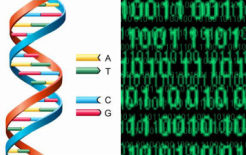Save millions who are gonna drown due dam burst.
Think of the poor animals in the forest reserve area.
History & Current Situation:
Mullaperiyar Dam is constructed over the headwaters of the Periyar River in Kerala, India. The Periyar National Park, Thekkady is located around the Periyar reservoir formed by the backwaters of this dam. It is operated by the Government of Tamil Nadu according to a 999-year lease agreement made during erstwhile British colonial rule. The name is derived from a portmanteau of Mullaiyar and Periyar. As the dam is located after the confluence of the Mullayar and Periyar Rivers, the river and hence the dam came to be called Mullaperiyar.
The Main purpose of building the Dam was to serve as an irrigation source for the some districts in TamilNadu. No One seems to have a question on that. The Dispute started when the leaks started to show in 110 year old dam. The Dam is made of lime and surki which were the best of construction materials available over a century ago. But how long can a Dam built on lime and surki can survive that took on an earthquake prone area. The British Engineer Colonel John Pennycuick who builds the dam predicted only a life span of 50 years for the Dam.
A Studies suggest a raise in the level of water will increase the water pressure and would end up i breakage of Dam walls. Studies conducted by IIT suggest the area where the dam is located is prone to earthquake as strong as 6.5 in ritcher scale. And the result would be a complete destruction of the dam built in lime and surki. The videos of leakage in the Dam had been out in the visual Medias many times and it clearly suggests there is lot of weak points in the Dam. The Kerala water resources said only a new dam could avert the impending disaster. Kerala chief minister Oommen Chandy said the state’s prime concern was safety of the people and that Kerala was ready to bear the expense for building a new dam.
This dam has a height of 54 meters (177 feet) and a basement of 44.2 meters (145 feet). It is built with a mixture of Lime stone and mortar. When it was built, there was no reinforced concrete or similar techniques. The engineer who built this dam calculated that this dam will stand for 50 years. After building the dam there was an agreement between princely state of Travancore and then Madras presidency. It was purely an unfair dealing. The agreement says of leasing out the land area of reservoir for 999 years.
(Content extracted from Web)





 RSS Feed
RSS Feed